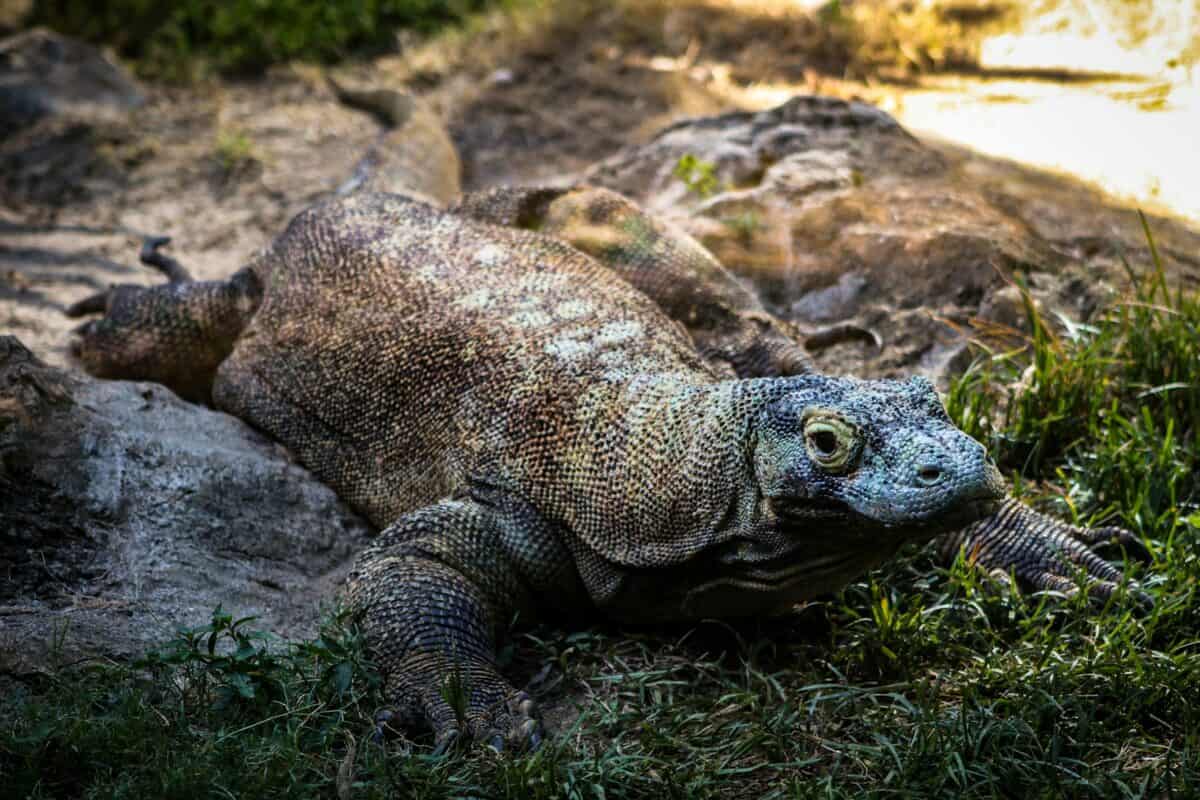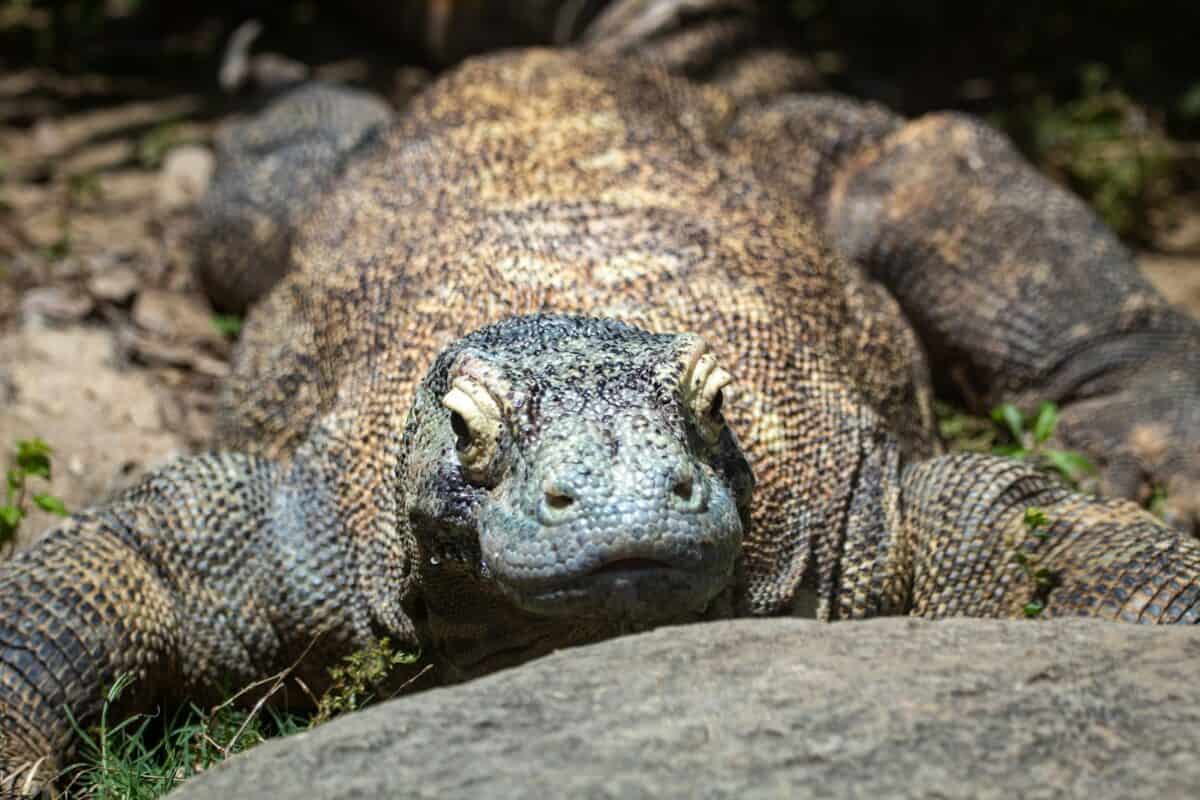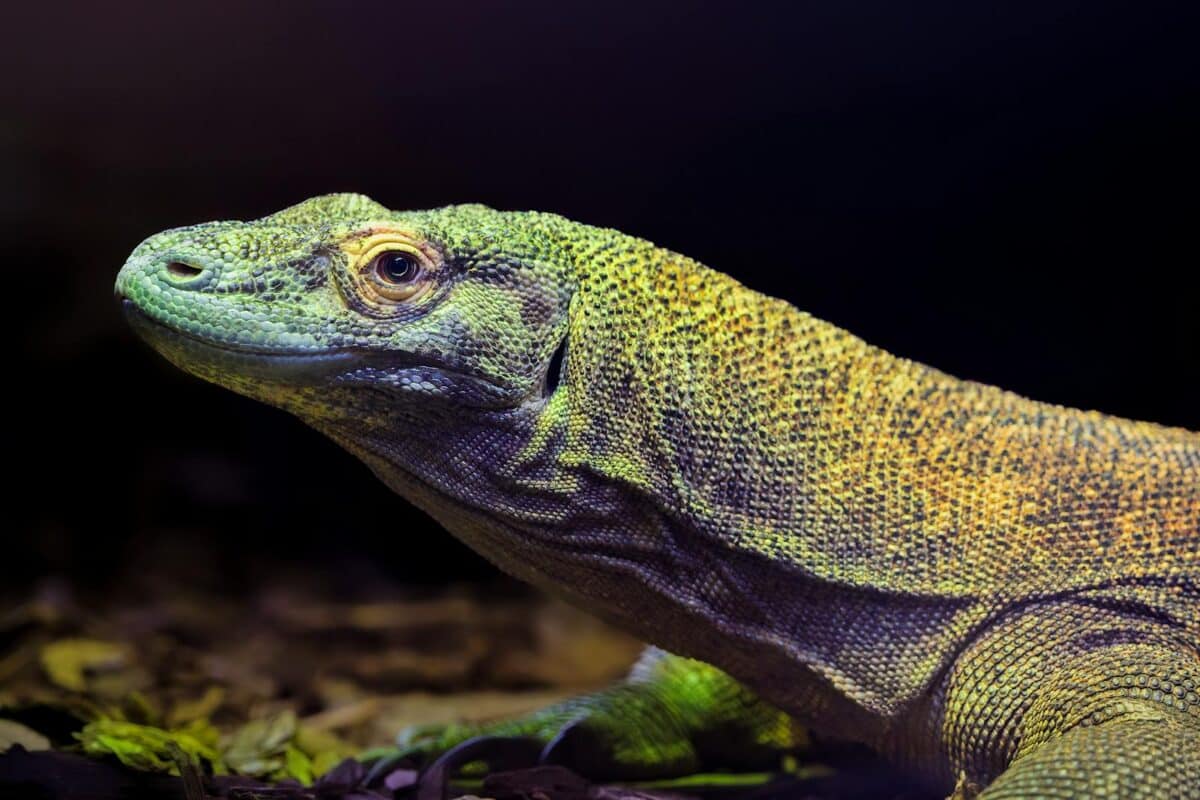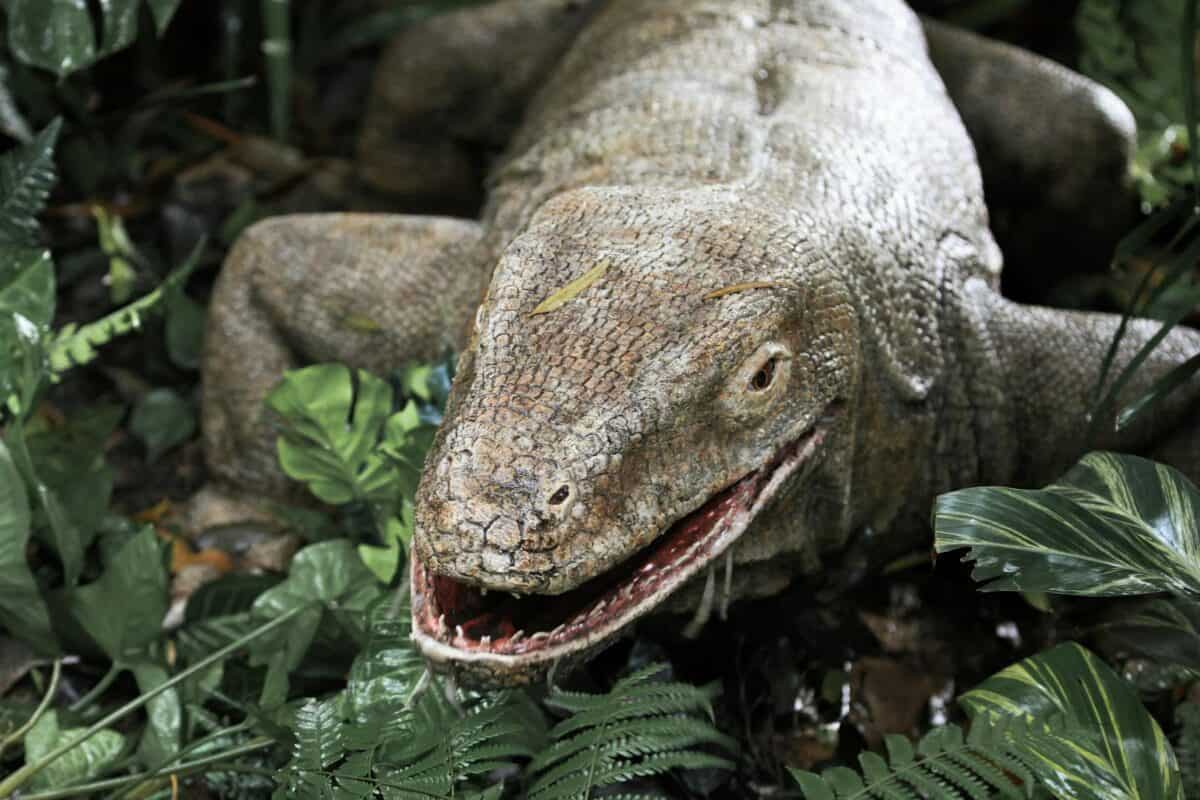In the remote eastern reaches of Indonesia lies an archipelago where prehistoric giants still reign supreme. The Komodo dragon (Varanus komodoensis), Earth’s largest living lizard, rules as an apex predator across five islands in the Lesser Sunda chain. Growing up to 10 feet long and weighing more than 300 pounds, these formidable reptiles have evolved a unique set of adaptations that ensure their dominance in their island ecosystems. From their deadly bacteria-laden bite to their surprising intelligence and phenomenal hunting patience, Komodo dragons represent one of nature’s most successful evolutionary stories. Their mastery of their domain is so complete that they’ve changed little over millions of years – a testament to their perfectly adapted design for island domination. This article explores how these magnificent creatures have become the undisputed rulers of their island kingdoms.
The Evolution of an Island Apex Predator

Komodo dragons emerged approximately 4 million years ago, evolving from ancestors that likely originated in Australia and dispersed across the Indonesian archipelago. Their evolutionary success stems from the phenomenon known as island gigantism, where species isolated on islands with limited competition can evolve to exceptional sizes. With few mammalian competitors, Komodo dragons filled the ecological niche of top predator.
Fossil evidence suggests that Komodo dragons once shared their territory with pygmy elephants and giant tortoises, both now extinct. Without large carnivorous mammals to compete with, these reptiles evolved to fill the role of apex predator, developing their impressive size and hunting capabilities. Their isolation on the islands of Komodo, Rinca, Flores, Gili Motang, and Gili Dasami has allowed them to refine their survival strategies over millennia, resulting in their current dominance.
Anatomical Adaptations for Dominance

The Komodo dragon’s physical adaptations are perfectly suited for its role as an apex predator. Their powerful limbs support a muscular body designed for both bursts of speed (up to 12 miles per hour) and patient stalking. Their tails, nearly as long as their bodies, provide balance during hunting and can deliver powerful, debilitating blows to prey.
Perhaps most distinctive are their 60 serrated teeth, which can be up to one inch long and are regularly replaced throughout their lifetime. Unlike most reptiles, Komodo dragons have skulls that are flexible with joints that allow them to open their jaws extremely wide, capable of swallowing large chunks of prey. Their claws function as both weapons and tools, allowing them to climb trees in their youth and dig extensive burrows as adults. These anatomical features combine to create a predatory package with few equals in the animal kingdom.
The Deadly Bite: Venom and Bacteria

For decades, scientists believed that Komodo dragons relied on septic bacteria in their mouths to kill prey that escaped an initial attack. In 2009, researchers discovered that Komodo dragons actually possess venom glands that produce toxins which prevent blood clotting, cause muscle paralysis, and induce shock. When a Komodo dragon bites, it delivers this venom through specialized grooves in its teeth, ensuring that even prey that initially escapes will eventually succumb.
In addition to venom, their mouths do harbor numerous bacteria species, creating a truly deadly combination. A single bite delivers both venom and bacterial infection, making escape nearly futile for most prey. This dual-attack system is incredibly efficient and explains how Komodo dragons can take down prey much larger than themselves, including water buffalo, deer, and wild boar. Their bite force has been measured at 39 newtons, which is modest compared to other predators, but their hunting strategy doesn’t rely on crushing force – instead, it’s their venom and patience that ensures hunting success.
Masters of Ambush: Hunting Strategies

Komodo dragons employ a hunting methodology refined over millions of years. They are ambush predators par excellence, capable of remaining motionless for hours while waiting for prey to approach. Their camouflaged coloration – a mottled brown that blends with the dry savanna landscape – renders them nearly invisible when stationary. They strategically position themselves along game trails or near water sources where prey animals must visit.
When hunting, they rely heavily on their keen sense of smell, using their forked tongues to sample air particles and transfer them to their Jacobson’s organ in the roof of their mouth – a system that allows them to detect carrion from up to 5.9 miles away. Once prey is detected, the dragon will either rush in a sudden attack or deliver a stealthy bite before backing away to follow the weakening animal, sometimes for days, until it collapses from the effects of venom. This patient hunting approach is incredibly energy efficient and has a high success rate, cementing their position at the top of their island food chains.
Extraordinary Sensory Capabilities

The sensory arsenal of Komodo dragons plays a crucial role in their dominance. While their eyesight is adequate, allowing them to spot movement from as far as 300 meters away, it’s their other senses that truly set them apart. Their hearing is finely tuned to detect low-frequency sounds, an adaptation that helps them identify the movements of potential prey through grass and underbrush.
Most remarkable is their sense of smell, which may be the most sophisticated of any reptile. Their forked tongues collect scent particles that are analyzed by their highly developed vomeronasal organ (Jacobson’s organ). This chemical sensing system allows them to create a three-dimensional “smell map” of their surroundings, detecting prey, other Komodo dragons, and even identifying the emotional states of animals in their vicinity. They can detect blood at concentrations as low as one part per million, making wounded animals particularly vulnerable. These extraordinary sensory adaptations ensure that little occurs within their territory without their awareness.
Territorial Behavior and Social Hierarchy

Despite their reputation as solitary hunters, Komodo dragons maintain a complex social structure governed by size and dominance. Males establish and defend territories that often overlap with those of several females, creating a polygynous mating system. Territorial disputes between males involve elaborate rituals including combat stances, hissing, tail lashing, and wrestling matches where they attempt to force each other to the ground.
A strict size-based hierarchy exists within Komodo populations, with larger individuals dominating feeding sites and mating opportunities. Interestingly, they demonstrate social learning capabilities, with younger dragons observing the behavior of adults. Their territorial marking involves both physical scratching of trees and chemical signals from feces and specialized glands. Through this combination of physical dominance and territorial behavior, dominant Komodo dragons effectively control the most resource-rich areas of their islands, further securing their position at the apex of their ecosystem.
Reproductive Dominance and Parthenogenesis

Komodo dragons exhibit remarkable reproductive adaptations that further ensure their evolutionary success. Mating occurs between May and August, with males engaging in ritualized combat to win access to females. The victor then guards the female for several days before mating. Females can store sperm for up to seven years, allowing them to produce fertilized eggs long after mating.
Perhaps most extraordinary is their ability to reproduce through parthenogenesis – a form of asexual reproduction where females can produce viable offspring without male fertilization. This adaptation, discovered in 2006, provides Komodo dragons with a significant evolutionary advantage. A single female washed ashore on a new island could potentially establish an entire new population without a male present. The offspring produced through parthenogenesis are always male, which would eventually allow for normal sexual reproduction once they mature. This reproductive flexibility represents yet another way these reptiles have adapted to dominate their island environments even in adverse conditions.
Ecological Impact as Keystone Species

As apex predators, Komodo dragons play a crucial role in maintaining the ecological balance of their island habitats. They regulate the populations of deer, pigs, and other herbivores, preventing overgrazing that could lead to habitat degradation. Their feeding habits also influence the distribution and behavior of prey species across the islands, creating what ecologists call a “landscape of fear” that affects entire ecosystems.
Additionally, Komodo dragons serve as important scavengers, cleaning up carcasses that might otherwise become sources of disease. Their burrows create microhabitats used by other species, and their droppings disperse seeds across their territory, contributing to plant diversity. Younger dragons occupy different ecological niches than adults, feeding on insects, birds, and small mammals before graduating to larger prey. This change in diet throughout their life cycle means they influence multiple food webs simultaneously. As a keystone species, the removal of Komodo dragons would trigger cascading effects throughout their island ecosystems, demonstrating their ecological dominance.
Cognitive Abilities and Problem-Solving Skills

Far from being simple-minded reptiles, Komodo dragons possess surprising cognitive capabilities that contribute to their success. They demonstrate remarkable problem-solving abilities, with captive individuals learning to distinguish between keepers and using tools to manipulate their environments. Research has shown they can recognize individual humans and remember specific experiences for years.
Their hunting strategies reveal complex cognitive processing, including the ability to predict prey movement patterns and adjust tactics accordingly. They’ve been observed using ambush locations that maximize success based on terrain and prey behavior – suggesting sophisticated spatial awareness. In captivity, they quickly learn feeding routines and can be trained to respond to specific commands. Some zoologists believe their intelligence rivals that of many mammals. These cognitive abilities, unusual among reptiles, provide Komodo dragons with a significant advantage in dominating their island habitats and adapting to changing conditions.
Longevity and Growth Patterns

Komodo dragons possess remarkable longevity, with wild individuals estimated to live up to 30 years and captive specimens potentially reaching 50 years of age. This extended lifespan allows them to grow continuously throughout much of their lives, with males typically reaching larger sizes than females. Young dragons grow rapidly, gaining approximately 2.5 pounds per month during their first few years.
Their growth pattern follows an interesting trajectory – young Komodo dragons spend their first few years primarily in trees, avoiding cannibalism by adults while feeding on small prey. As they grow, they gradually transition to a terrestrial lifestyle and larger prey. This ontogenetic niche shift (changing ecological roles throughout development) reduces competition between age groups and ensures maximum utilization of available resources. Their indeterminate growth pattern means they continue growing, albeit more slowly, throughout adulthood, with dominant individuals often achieving the largest sizes. This connection between age, size, and dominance reinforces their hierarchical social structure and ensures that experienced individuals maintain control over the most valuable resources.
Adaptations to Island Environment

The islands inhabited by Komodo dragons present unique environmental challenges that have shaped their evolution. These environments are characterized by seasonal drought, limited freshwater, and relatively sparse large prey compared to mainland ecosystems. In response, Komodo dragons have developed remarkable physiological adaptations to thrive where other large predators could not.
Their metabolism is extraordinarily efficient, allowing them to convert up to 80% of consumed food into growth and energy – far more efficient than most mammals. This efficiency enables them to survive on as few as 12 meals per year. They can consume up to 80% of their body weight in a single feeding, storing energy in their tails and bodies to sustain them through lean periods. Their kidneys have adapted to conserve water in their arid environment, and they can drink brackish water that would be toxic to many other species. During the hottest hours, they retreat to burrows where temperatures remain stable, emerging to hunt during cooler morning and evening hours. These adaptations to their specific island environment have allowed Komodo dragons to monopolize the apex predator niche where other competitors would fail.
Conservation Status and Human Interaction

Komodo dragons now face challenges that millions of years of evolution never prepared them for – human encroachment, climate change, and poaching. Currently listed as endangered on the IUCN Red List, wild populations are estimated at less than 4,000 individuals confined to a fraction of their historical range. Habitat loss remains their greatest threat, with development reducing their territory and fragmenting populations.
Their relationship with humans is complex. While they occasionally attack people (with approximately 5-10 attacks recorded annually), they’ve also become the cornerstone of a vital ecotourism industry that brings substantial revenue to local communities. Conservation efforts focus on habitat protection, anti-poaching measures, and managing the delicate balance between tourism and preservation. Komodo National Park, established in 1980, encompasses 1,733 square kilometers of protected land and water. Successful conservation will require addressing not just direct threats to the dragons but also preserving the entire island ecosystems they dominate. Without intervention, these magnificent predators that have dominated their islands for millions of years could disappear within our lifetime.
Conclusion: Evolution’s Perfect Island Predator

The Komodo dragon represents one of nature’s most remarkable evolutionary success stories – a reptile that has established complete dominance over its island ecosystem. Through a combination of physical power, deadly venom, remarkable patience, and surprising intelligence, these dragons have maintained their position as apex predators for millions of years with minimal evolutionary change. Their adaptations are so perfectly suited to their environment that they’ve weathered climate shifts and ecosystem changes that drove many contemporaries to extinction.
As humans continue to impact their habitat, the future of Komodo dragons remains uncertain, but conservation efforts offer hope. The continued survival of these magnificent reptiles depends on our ability to protect not just the dragons themselves but the complex island ecosystems they dominate. Their story reminds us of the extraordinary adaptability of life and the special evolutionary pathways that island environments can produce.
Perhaps most fascinating is how these dragons represent a living window into prehistoric times – a glimpse of what the age of reptiles might have looked like. In their patient hunting, territorial dominance, and sheer physical presence, Komodo dragons embody the perfect island predator, a masterpiece of evolutionary adaptation that continues to captivate scientists and nature enthusiasts alike.
As we work to ensure their survival, we preserve not just a species but a unique example of evolutionary perfection – the ultimate island dominator, a living dragon that has mastered its domain like few creatures on Earth.
- This Fish Has the Most Teeth in the Ocean—And Uses Them Well - August 9, 2025
- How Wolves Use Group Howls to Reunite With Pups - August 9, 2025
- 12 Dog Breeds That Form the Deepest Emotional Bonds with Their Owners - August 9, 2025

